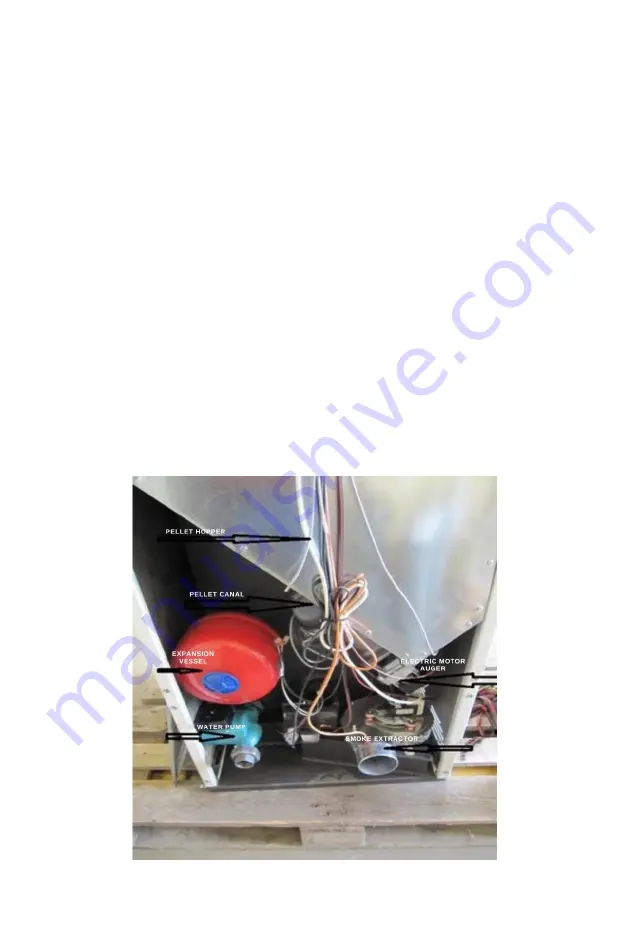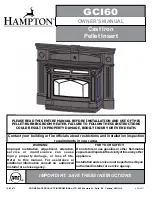
4
4.
Pellet stove components
The pellet stove consists of the following components
:
-
combustion chamber –
fig. 3;
-
pot - place where the pellets burn
– fig. 4 and fig. 5;
-
water heater;
-
pellet hopper –
pellets for burning are filled into it – fig. 1 and fig.2;
-
auger for pellets (screw auger)–
delivers pellets from the hopper to the inclined
channel and from there to the pot for combustion – fig. 1;
-
electric gear motor:
drives the pellet auger (screw auger)– fig. 1;
- electric lighter:
for initial ignition of the pellets in the pot;
-
smoke extractor:
ensures removal of flue gases from the combustion chamber to the
flue and sucks in air for combustion fig. 1,
- pressure switch:
reports the underpressure in the exhaust tract;
-
limiting thermostat (STB):
in the event of a failure in the controller or the sensor
for measuring the temperature of the hot water, to turn off the supply of pellets;
-
thermal limiter mounted on the inclined chute for feeding pellets into the
combustion chamber:
shuts down the pellet auger in case of backfire or if the inclined
chute temperature is exceeded.
-
light detector:
Opto-sensor for monitoring the light intensity of the flame
determining the presence of combustion.
-
electronic controller with control panel:
monitors and manages the
combustion process as well as ensures the operation of the provided protections-
fig.1
Fig. 1
Summary of Contents for Sofia
Page 1: ...1 INSTALLATION OPERATION AND MAINTENANCE INSTRUCTIONS...
Page 5: ...5 Fig 2 Fig 3...
Page 6: ...6 Fig 4 Burner pot Fig 5 Burner pot...
Page 12: ...12 Fig 9 Fig 10...
































